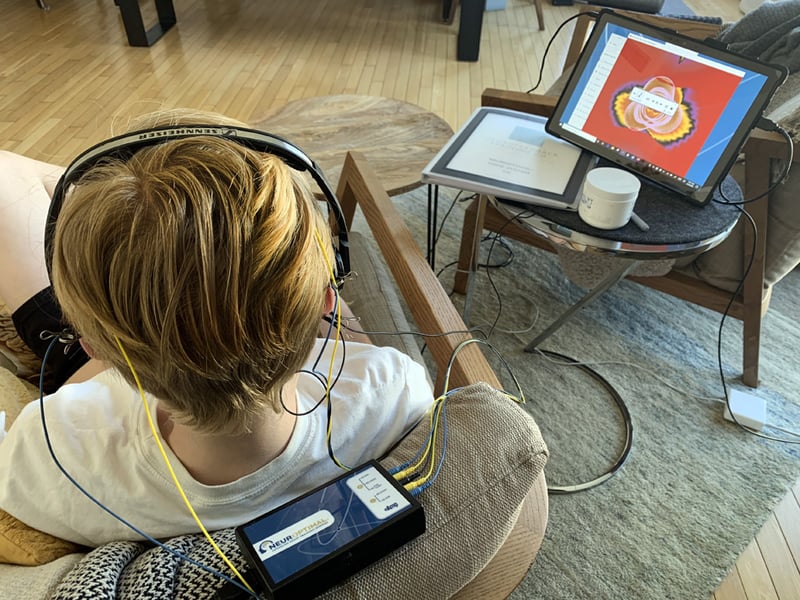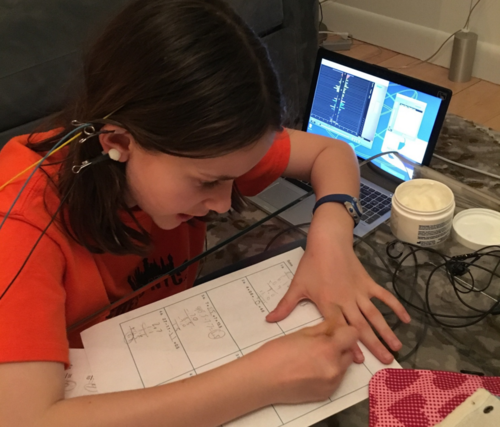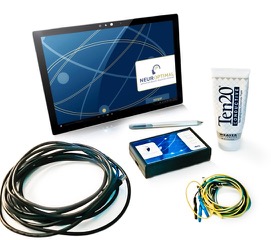Here are some useful tips compiled from years of providing neurofeedback for children and families. Our trainers are always working to support families to get the most out of brain training. After 10 years the top tip is to make a schedule and stick to it! When renting a home system and running session themselves, the number one reason families don't meet their goals, whether it is improved school performance, or emotional re-regulation, is because they don't do the sessions!
How best to help a child benefit from neurofeedback?

1. Two is better than one! A parent training boost the child's training.
We strongly recommend that a parent also train if they are renting a machine primarily for their child’s issues. Hands down, we have most satisfied customers when this is the case.
Why? Your child’s brain/central nervous system (CNS), is learning to assess current needs from gathering information in the here-and-now, rather than using habitual information/neural pathways. Some common brain habits we see in children are using their scanning, impulsive brain when it's time to focus, or getting stuck in worry or nervousness when there is no present danger.
We call these maladaptive brain responses that are based on using habitual information/neural pathways to function not realizing that those responses are not appropriate to the present task. For example, why should the brain produce a fear state when there is no threat? A major shift through neurofeedback training is your child’s brain learns to be in a state called regulation: calm, alert, and open to the here-and-now, and only become active only when their is an event that needs action.
This process of learning is sped up when a primary caregiver’s brain is also learning from doing NeurOptimal® sessions, the same process of being regulated–calm, centered, open. Just like you see in pack animal behaviors, children’s brains tune themselves to their caregivers’ brains. If the parent is anxious, the child will also become anxious. If the parent becomes calm the child’s brain will also shift, like tuning forks resonating with each other.
 A terrific example of this process of attunement is to watch The Dog Whisperer on National Geographic. In the episodes you will see examples of how Cesar (the alpha dog trainer) who is “calm assertive”, i.e. has a regulated CNS, works with an anxious/fearful/aggressive dog through the natural attunement process where a beta dog’s CNS aligns with an alpha’s CNS.
A terrific example of this process of attunement is to watch The Dog Whisperer on National Geographic. In the episodes you will see examples of how Cesar (the alpha dog trainer) who is “calm assertive”, i.e. has a regulated CNS, works with an anxious/fearful/aggressive dog through the natural attunement process where a beta dog’s CNS aligns with an alpha’s CNS.
We are pack animals and betas follow the alpha. Children follow their parents. When an “alpha” member (hopefully you read: parent) trains it helps the “beta” brains and boosts the effectiveness of their training.
Another metaphor is tuning forks. Think of tuning forks that are close together. They will resonate at the same pitch. Mom and Dad’s nervous systems are a powerful ‘tuning fork’ for kids. If their brains train and come into regulation—that calm, focused, playful ‘pitch’—it is much easier for the child’s nervous system to resonate at that pitch.

2. Prioritize and Schedule your neurofeedback sessions
Our family schedules are often overloaded and while we may want to add another thing, actually making it happen can prove harder than imagined. The most common challenge our family renters express when they return their home rental is: “I loved it. I just wish we had trained more!”
Like anything we want to accomplish in our busy lives: if it’s not on the schedule it won’t happen. Make it a realistic schedule before you start your rental with blocks a few times a week when you can count on 45 minutes of free time. The good news is that with NeurOptimal®'s unique design, the training cues are given through auditory feedback. And the part of the brain that registers and responds to those cues is the automatic (unconscious) brain. So trainees can be doing other things while the training is occurring and stil have the best results possible.
 So long as the activity does not require a lot of movement (so head or body movements are fine) so that the sensors stay fixed on the head and ears. Activities like reading, playing a game on a separate device with the volume off, or my daughter's favorite when she was young, putting together Lego pieces.
So long as the activity does not require a lot of movement (so head or body movements are fine) so that the sensors stay fixed on the head and ears. Activities like reading, playing a game on a separate device with the volume off, or my daughter's favorite when she was young, putting together Lego pieces.
3. Make training a reward
The second biggest challenge families face is getting their child (or partner's) cooperation. Parents have the easiest time making the sessions a breeze when they make neurofeedback a rewarding time, rather than another chore. We've even had parents pay their children to have their sessions making it a 'win/win'.
Bill, a successful entrepreneur, who rented a home neurofeedback system, never missed a session. He told himself that during his training time he didn’t have to accomplish anything else. It became the two times during the week when he truly let himself relax. A gift to his brain and his go-getter mind! He started with training himself for the first fews weeks to get a hang of it. Then he offered it to his son in a way he knew his son would enjoy. It would be time that they could play Battleship together a few times a week.
Think about your own child and what would make the training schedule an enjoyable experience for him or her. Remember the brain training works only if the sessions happen!

4. Listen to your body and get sleep
After ten sessions a mom who was training said to me, “Natalie, since starting I’m noticing how exhausted my body is. All I want to do is sleep!”
This observation is common and some people try to push through the exhaustion and maintain their 6 hours of sleep a night, while others yield and get more rest. Remember: a main purpose of sleep is to give the brain time to remove toxins that have built up throughout the day. Your brain is asking for what it needs to optimize it’s functioning. Please listen! One strategy is to go to bed closer to when your children go to sleep.


5. Get the toxins out of your life and replace them with nutrients
The brain is only as effective as the building blocks it has to build and repair its roads and highways. One main toxin in our lives is sugar. The vitamin we’re often depleted in is Vitamin D—essential for our cheerful disposition. A trained brain becomes a better communicator of its needs. Pay attention you may have thoughts like: maybe I should do that cleanse I was thinking about. Or I should get a physical and check on my vitamin levels. A great place to start is on Dr. Hymen’s website. Read also our blog post about what foods to eat and avoid for your brain.
Interested in Neurofeedback Training for your family?

At Neurofeedback Training Co. we provide three kind of training options:
- Schedule a session at one of our clinic locations: NYC, LA & Pasadena, or Boulder. Try-out offers available!
- Rent an advanced home system: Same effective neurofeedback system as in our clinics. Rent month by month and extend as long as you wish! Sessions can be as low as $40 per session or more
- Buy a home unit: Natalie Baker is also a sales rep. for Zengar, the maker of the NeurOptimal Neurofeedback System. She can guide you which neurofeedback machine to get, for personal or professional use.